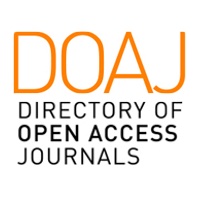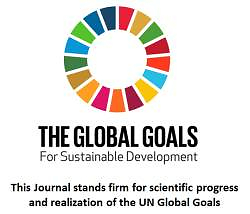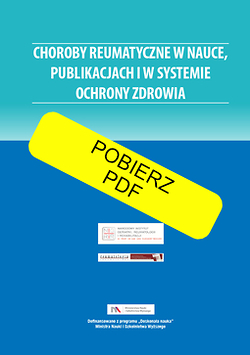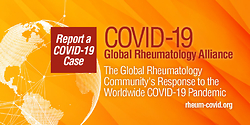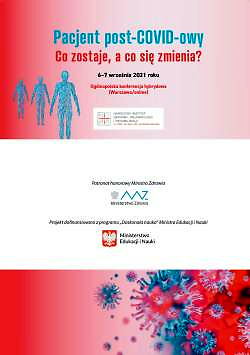|
5/2006
vol. 44
Nauczanie przeddyplomowe reumatologii w Polsce i nowe sugestie
Reumatologia 2006; 44, 5: 247–250
Data publikacji online: 2006/11/16
Pobierz cytowanie
Our Committee has made a number of attempts to determine the optimal requirements for an undergraduate programme, but this has proved extremely difficult.
So, apart from outlining how we teach students in my country, I am going to present my views on this matter and make a few suggestions.
In Poland we have 11 universities with medical faculties where Polish, as well foreign students, are taught rheumatology as a part of internal medicine. We teach students of the 4th, 5th or rarely 6th year, and rheumatology occupies from 20 to 40 hours of activities mainly at the bedside and in outpatient clinics [1, 2]. Students use a variety of Polish and English textbooks and, in order to give them essential knowledge in rheumatology, we prepared our own short handbooks [3, 4].
It is important to appreciate that the majority of medical students intending to practice in Europe will become general practitioners (GPs). At the same time it is well known that as many as 30% of the complaints made by patients to the first doctor they contact will be of some ”rheumatic” problem. The GP must therefore be able to make a preliminary diagnosis and to plan the subsequent management of the patient.
In general practice 3 groups of rheumatic patients must be distinguished:
1. In the first group there are patients with signs and symptoms of ”true” rheumatic diseases, in which the musculoskeletal system (MSK) is involved [e.g. osteoarthritis (OA), rheumatoid arthritis (RA), spondyloarthropathies (SpA), etc.].
2. In the second group there are patients with MSK complaints, not connected, however, with rheumatic diseases, but, for instance, with an early stage of an infectious disease or with diseases of the haemopoietic system, malignancy, etc.
3. Lastly, rheumatology includes a number of diseases and symptoms which sometimes may not be connected with MSK at all. These include antiphospholipid syndrome (APS) and the vasculitides.
In my opinion all these possibilities should be included in the curriculum prepared for students.
We have now a very important document – ”Global core recommendations for a musculoskeletal undergraduate curriculum” – which was developed by renowned authorities in the field [5, 6]. I agree with the statement that ”There is... a clear need to improve the competencies of all doctors, and the education of medical students in these conditions in many medical schools needs to be reconsidered” [6]. The problems experienced by rheumatological patients are frequently underestimated by doctors. These facts reflect the inadequate education and training they receive at medical school [7–12], and the curriculum should reflect this. At the same time, in the ”Global core recommendations” there is in my opinion a predominance of symptoms such as fractures, trauma, etc., which belong more to orthopaedics or surgery than to ”true” rheumatology. Even emergency situations almost exclusively involve the MSK system (Table I).
However, it is generally accepted that rheumatic diseases are connected with direct threats to life – e.g. catastrophic APS, acute respiratory or renal crises in Wegener’s granulomatosis, acute renal crisis or respiratory failure in systemic sclerosis (SSc), sudden neuropsychiatric manifestations in systemic lupus erythematosus (SLE), rupture of arteries, rupture of the uterus or large bowel in the vascular type of Ehlers-Danlos syndrome, amaurosis fugax in APS, and many other conditions (Table II).
The large rheumatological textbooks such as ”Kelley’s Textbooks of Rheumatology” [13] usually do cover problems regarding the aetiopathogenesis, epidemiology, symptomatology, diagnosis and treatment of the ”true” rheumatic diseases, and our teaching should include all the diseases mentioned therein [14, 15] (Table III). Moreover, there is an opinion that we should teach medicine through rheumatology because it is highly interdisciplinary [12]. The knowledge and skills which a medical student should acquire were formulated during the 1997 Leuven Conference of the Committee entitled ”Teaching the Teachers of Rheumatology” [14] (Table IV).
Methods of teaching may be ”classical”, i.e. by means of lectures, seminars, videos, CDs and so on, or in small groups, by bedside and outpatient clinic activities, and sometimes by ”patients-partners” (mainly when RA symptoms are presented) [7, 14]. In my opinion, the use of ”simulated patients” can produce an artificial atmosphere and make it difficult for a student to learn how to notice symptoms which are not mentioned by the patient or signs such as pallor, swellings or enlarged glands. Several ”experimental” methods of teaching have been proposed, namely problem-based learning, poster sessions or ”Intensive Live Patients Experience” (Table V). It is important to follow the rule of giving priority to ”training” over ”education” [6, 14].
The practical examination is most important in the evaluation of acquired knowledge since it entails an evaluation of ability in history taking during which we can observe the student’s communication skills. Proficiency in physical examination and interpretation of diagnostic tests and of imaging in rheumatology must also be tested and evaluated [14].
Conclusions
1. We should modify the recommendations so as to remove the points connected too closely with orthopaedics and traumatology, and instead emphasise details of the most important rheumatic diseases and the emergency states they can cause.
2. There is an urgent need for a concise, convenient handbook summarising all the essential data contained in the larger rheumatological textbooks.
3. An educational course in rheumatology for undergraduates should be prepared ”on line”.
References
1. Zimmermann-Górska I. Rola nauczania przed- i podyplomowego w kształceniu lekarzy rodzinnych. Reumatologia 2000; 38: 120-2.
2. Zimmermann-Górska I. Nauczanie reumatologii w Polsce. Część I. Szkolenie studentów Wydziałów Lekarskich. Reumatologia 2005; 43: 17-20.
3. Zimmermann-Górska I. Choroby reumatyczne. Podręcznik dla studentów. Wydawnictwo Lekarskie PZWL, Warszawa 2004.
4. Zimmermann-Górska I. Reumatologia w praktyce lekarza rodzinnego. Wydawnictwo Lekarskie PZWL, Warszawa 1998.
5. Doherty M, Woolf A. Guidelines for a rheumatology undergraduate core curriculum. Ann Rheum Dis 1999; 58: 133-5.
6. Woolf AD, Walsh NE, Akesson K. Global core recommendations for a musculoskeletal undergraduate curriculum. Ann Rheum Dis 2004; 63: 517-24.
7. Dacre JE, Fox RA. How should we be teaching our undergraduates? Ann Rheum Dis 2000; 59: 662-7.
8. Dacre JE, Griffith SM, Jolly BC. Rheumatology and medical education in Great Britain. Br J Rheumatol 1996; 35: 269-74.
9. Glazier R, Buchbinder R, Bell M. Critical appraisal of continuing medical education in the rheumatic diseases for primary care physicians. Arthritis Rheum 1995; 38: 533-8.
10. Hosie GA. Teaching rheumatology in primary care. Ann Rheum Dis 2000; 59: 500-3.
11. Lanyon P, Pope D, Croft P. Rheumatology education and management skills in general practice: a national study of trainees. Ann Rheum Dis 1995; 54: 735-73.
12. Rudd E, Lockshin MD. Education in rheumatology for the primary care physician. J Rheumatol 1978; 5: 99-111.
13. Harris ED, Jr, Bydd RC, Firestein GS, et al. (eds.). Kelley’s Textbook of Rheumatology, Seventh Edition. Elsevier Saunders 2005. 14. Dequeker J, Rasker JJ, Woolf AD. Educational issues in rheumatology Bailliere’s Clinical Rheumatology 2000; 14: 715-29. 15. Doherty M, Lanyon P. Rheumatology: What should all doctors know? Ann Rheum Dis 2000; 59: 409-13.
Copyright: © 2006 Narodowy Instytut Geriatrii, Reumatologii i Rehabilitacji w Warszawie. This is an Open Access article distributed under the terms of the Creative Commons Attribution-NonCommercial-ShareAlike 4.0 International (CC BY-NC-SA 4.0) License (http://creativecommons.org/licenses/by-nc-sa/4.0/), allowing third parties to copy and redistribute the material in any medium or format and to remix, transform, and build upon the material, provided the original work is properly cited and states its license.
|
|

 ENGLISH
ENGLISH

